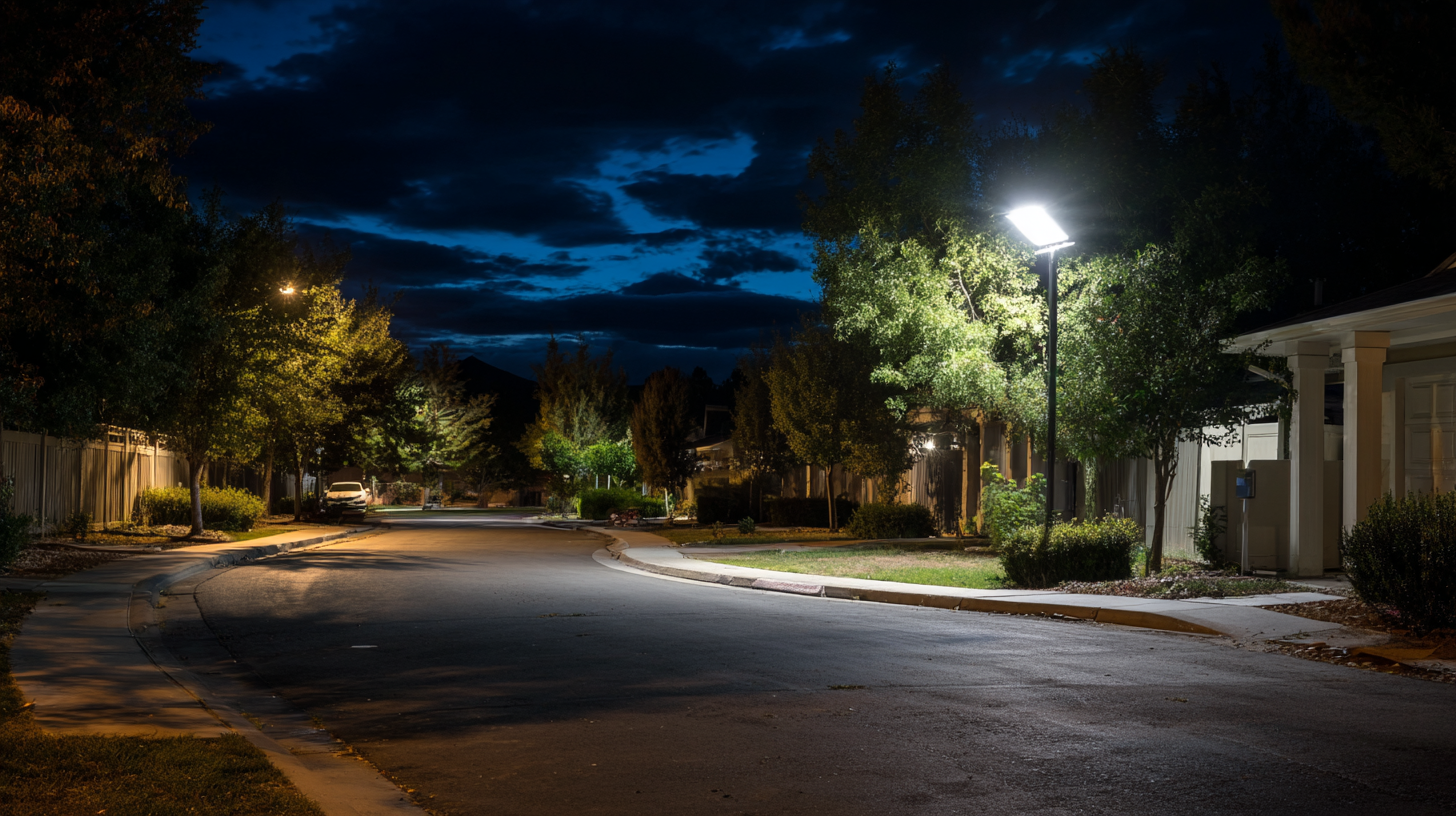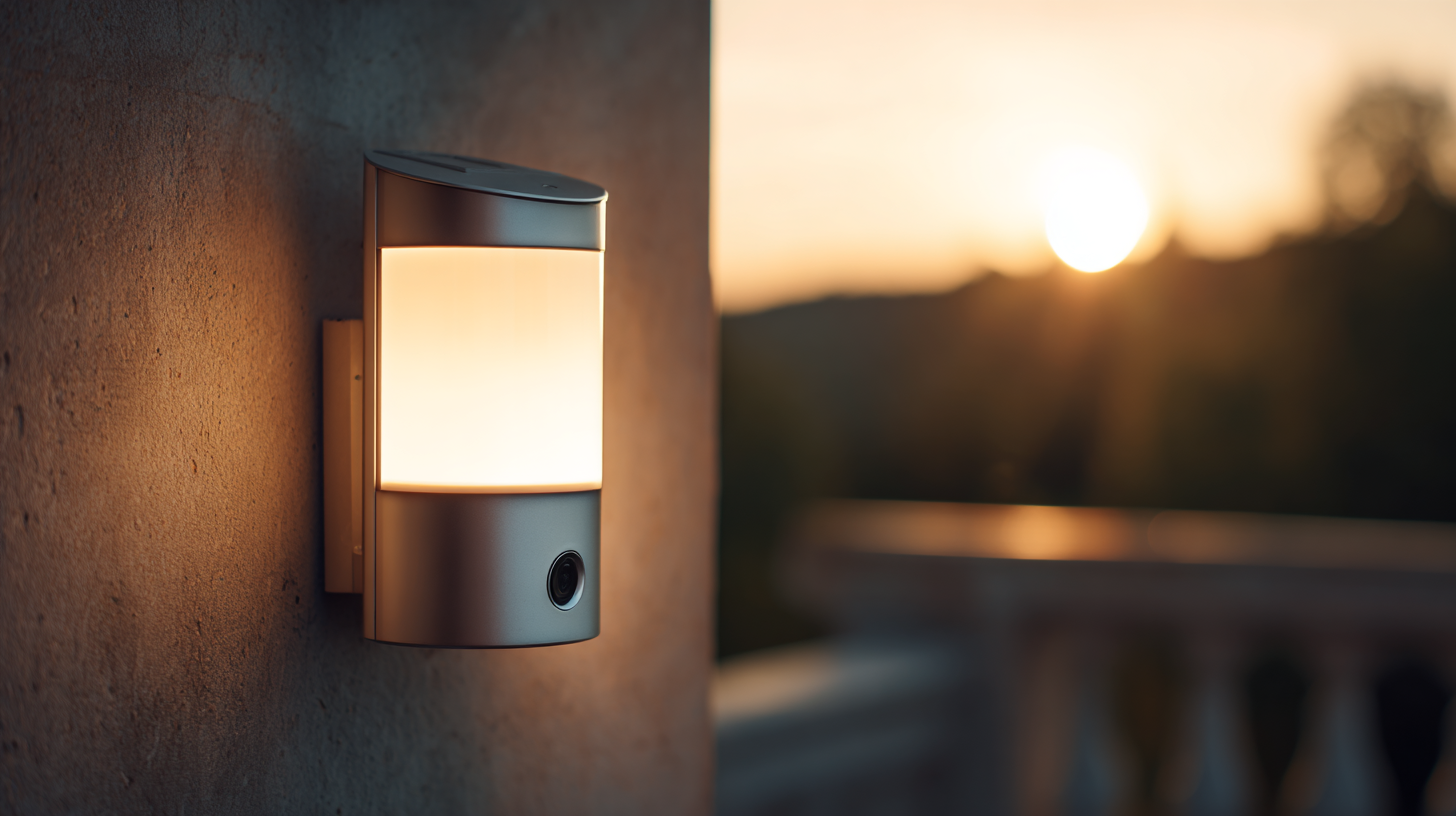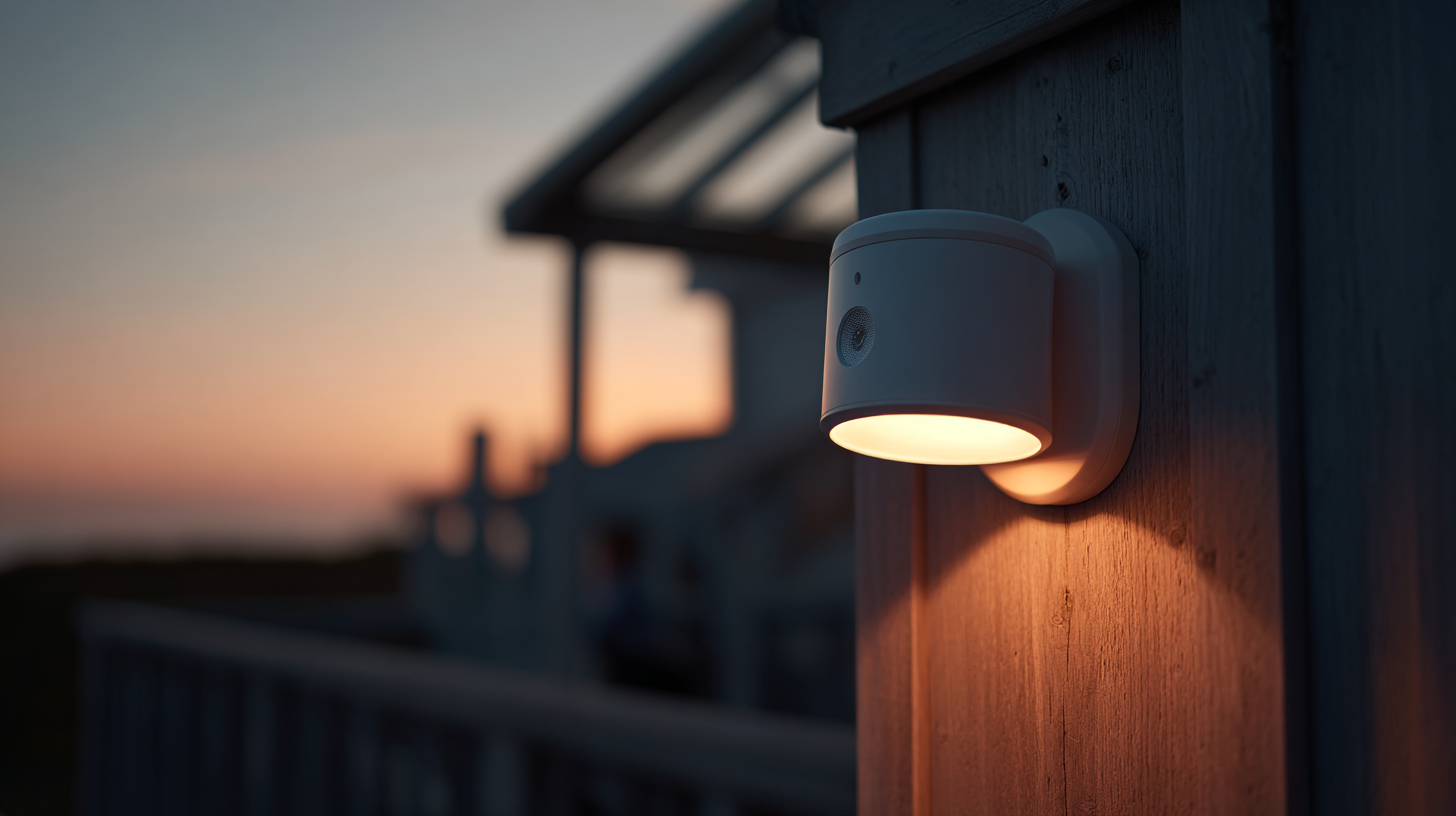What is the Ultimate Guide to Best Solar Motion Sensor Light Selection
As the world continues to embrace sustainable energy solutions, the demand for innovative outdoor lighting options has surged, making the Solar Motion Sensor Light an essential addition to modern homes and businesses. This guide aims to provide a comprehensive overview of the best solar motion sensor lights available on the market, emphasizing their outstanding efficiency, eco-friendliness, and advanced functionality. With the projected market analysis for the year 2025 highlighting a significant growth trend in this sector, consumers are increasingly seeking reliable information to make informed purchasing decisions.

Whether you are looking to enhance security, save energy, or simply add convenience to your outdoor spaces, understanding the key features and benefits of solar motion sensor lights will empower you to choose the perfect product that meets your needs. Join us as we delve into the ultimate selection tips, essential criteria, and market insights that will help you illuminate your surroundings with confidence.
Understanding Solar Motion Sensor Lights: Key Features to Consider
When selecting the best solar motion sensor lights, understanding key features is crucial for making an informed decision. One of the primary attributes to consider is the sensitivity of the motion sensor. High-quality lights typically offer adjustable sensitivity settings, allowing users to customize their performance based on the area in which they are installed. For instance, if the light is placed in an area with frequent animal activity, a less sensitive setting may prevent the light from being triggered unnecessarily.
Another important factor is the brightness output, measured in lumens. The right level of brightness depends on the intended use—whether for security, lighting pathways, or enhancing the ambiance of outdoor spaces. Lights with higher lumens provide greater visibility and are especially beneficial for security purposes. Additionally, battery capacity and solar panel efficiency directly impact the light's longevity. A top-tier solar motion sensor light should have a robust battery that holds charge well, ensuring consistent operation even during cloudy days or nights. These features collectively enhance the effectiveness and reliability of solar motion sensor lights, making it easier for homeowners to choose the best product for their needs.
Comparison of Key Features in Solar Motion Sensor Lights
Top 5 Best Solar Motion Sensor Lights for Enhanced Home Security
When it comes to enhancing home security, solar motion sensor lights are an excellent choice due to their energy efficiency and convenience. These lights automatically activate upon detecting movement, providing added illumination and deterring potential intruders. In this guide, we will explore the top three solar motion sensor lights available on the market that combine durability, brightness, and effective motion detection.

One standout option is the LITOM 12 LEDs Solar Motion Sensor Light. Known for its wide detection range and impressive brightness, it offers three different lighting modes to suit various needs. Another excellent choice is the Hampton Bay Solar Motion Sensor Light, which is highly rated for its robust construction and long-lasting battery life. Lastly, the URPOWER Solar Lights not only boast a sleek design but also feature a smart PIR motion sensor that adjusts its brightness based on the surrounding light levels. These top picks reflect the best in solar motion sensor technology, helping to keep your home safe while being eco-friendly.
How to Choose the Right Brightness and Motion Detection Range
When selecting the best solar motion sensor light, one of the most critical factors to consider is brightness. Brightness is measured in lumens, with higher lumens providing more light. Consider the area where you plan to install the light – a driveway, garden, or patio may require more lumens for adequate visibility. For instance, if your space demands clear illumination for safety and security, look for lights that offer at least 700 to 1000 lumens. However, for decorative purposes or subtle lighting, lower lumens might suffice.
Another essential aspect to evaluate is the motion detection range of the solar light. This range typically varies between 20 to 70 feet, with some advanced models offering even wider detection areas. Ideally, choose a light with a detection range that covers your entire intended outdoor area, ensuring that movement is picked up as soon as someone approaches. Additionally, consider the detection angle, usually between 90 to 180 degrees; a broader angle allows for better coverage. By carefully assessing both brightness and motion detection capabilities, you can ensure maximum effectiveness of your solar motion sensor light.
Installation Tips for Optimal Performance of Solar Motion Sensor Lights
When it comes to the installation of solar motion sensor lights, choosing the right location is crucial for optimal performance. Ideally, these lights should be placed in areas that receive ample sunlight during the day to ensure the solar panels can fully charge. Aim for spots that are unobstructed by trees, buildings, or other structures that could cast shadows. Additionally, mounting the lights at a height of about 6 to 8 feet can enhance their ability to detect motion while also providing a wider beam of light coverage.
Another important aspect of installation is the angle of the solar panel. Adjusting the panel to face south (in the Northern Hemisphere) can maximize sunlight exposure throughout the day. It’s also advisable to consider the lighting needs of your specific environment; densely populated areas may require brighter lights with a wider sensor range, while quieter settings might benefit from softer illumination. Be sure to test the motion sensors after installation to verify their sensitivity and coverage, ensuring that the lights activate as intended when movement is detected.
What is the Ultimate Guide to Best Solar Motion Sensor Light Selection - Installation Tips for Optimal Performance of Solar Motion Sensor Lights
| Feature | Description | Optimal Installation Tips |
|---|---|---|
| Brightness | Measured in lumens, brightness affects visibility and security. | Choose lights with at least 500 lumens for adequate brightness. |
| Sensor Range | Distance at which the motion sensor detects movement. | Install at a height of 6-10 feet for optimal sensitivity. |
| Battery Life | Duration the light functions on a full charge. | Choose models with replaceable batteries for longevity. |
| Solar Panel Size | Larger panels typically charge batteries more efficiently. | Install panels in direct sunlight for at least 6 hours daily. |
| Water Resistance Rating | Indicates the light's ability to withstand moisture. | Opt for IP65 or higher ratings for outdoor use. |
Comparing Price Points: Finding Affordable yet Effective Options
When selecting solar motion sensor lights, cost remains a pivotal factor for many consumers without compromising on quality or effectiveness. Recent market analysis indicates that the average price of solar motion sensor lights ranges from $30 to $100, depending on features and brand reputation. However, robust performance can also be found in budget-friendly models, with several options under $50 receiving outstanding reviews for their brightness and reliability. For instance, data from the Home Improvement Research Institute (HIRI) reveals that nearly 60% of consumers prioritize affordability alongside functionality when making their purchases.

Moreover, while exploring affordable options, it's essential to scrutinize the specifications that contribute to performance. A study conducted by the International Energy Agency (IEA) found that solar lights with at least 100 lumens output tend to provide sufficient illumination for most outdoor settings, such as gardens and pathways. Additionally, brands that offer adjustable motion sensitivity and solar panel efficiency tend to be well-reviewed, even at lower price points. By focusing on key performance metrics, consumers can ensure that they make an informed decision when balancing budgetary constraints and effectiveness in their solar motion sensor light selection.
